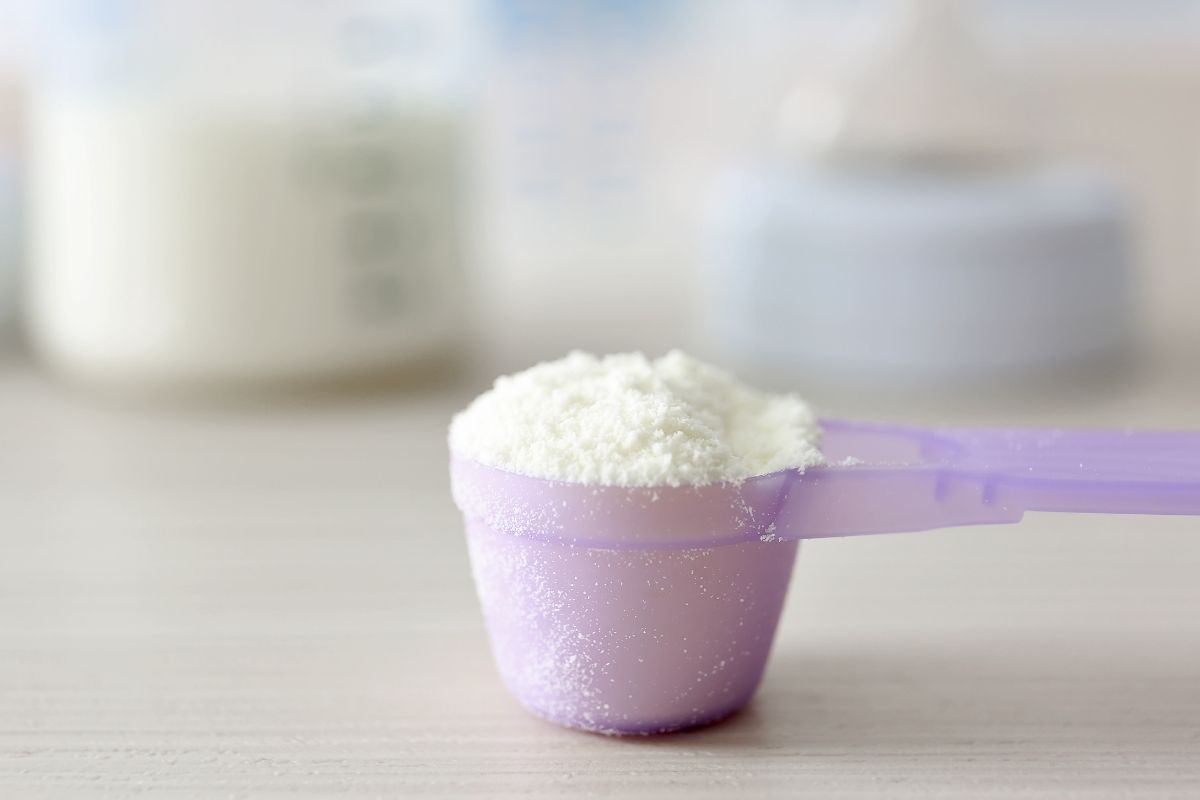
Breastfeeding is a wonderful way for a mother to bond with her baby and give them the essential nutrients they need for a healthy start in life. However, it can also have challenges, especially for new mothers.
In this article, we’ll share some helpful tips for a successful start to breastfeeding. We start by explaining the superfood that breast milk is and what benefits it has for you and your baby. Then we offer advice on preparing for breastfeeding, getting the proper latch, and managing common breastfeeding issues.
Whether you’re a first-time mom or have breastfed before, these tips can help you and your baby have a positive breastfeeding experience!
Table of content
- What is Breast Milk?
- Breastfeeding Benefits
- Preparing for Your Breastfeeding Journey
- Latching Techniques
- Establishing a Good Breastfeeding Position
- Tips for Increasing Milk Supply
- Breastfeeding Accessories and Devices
- Storing and Handling Breast Milk Supply
- Breastfeeding Tips for Returning to Work
- When to Seek Professional Help
- Coping with the Criticism of Breastfeeding
- Conclusion
What is Breast Milk?
A mother’s milk consists of all the vital nutrients necessary to meet your baby’s hydration and nutritional requirements for optimal growth and development, including:
- Proteins
- Lipids
- Carbohydrates
- Minerals
- Vitamins
The special thing about breast milk is that our bodies design this superfood so that your baby’s body easily absorbs the nutrients. Even more astonishing than that, as your baby grows, the composition of your milk will adapt to meet your baby’s changing nutritional needs!
Breastfeeding Benefits
As you probably know, breastfeeding is an excellent way for moms to bond with their babies. The skin-to-skin contact, holding, and stroking during breastfeeding increase the physical and emotional connection between you and your little one.
Breastfeeding has other benefits for you and your baby beyond building a strong maternal-infant bond. For starters, breastfeeding helps mothers lose weight and recover from childbirth more quickly. Here’s a quick list of more health benefits for all you breastfeeding mommas!
Evidence suggests that breastfeeding moms have a lower risk of developing:
- Type 2 diabetes
- High blood pressure
- Breast cancer
- Ovarian cancer
- Postpartum depression
As for your baby, breast milk is the most nutritious food you can feed your little one. The antibodies from your body are passed down to your baby through your breast milk, which boosts your baby’s immune system.
Babies fed breast milk have improved cognitive development and are at a lower risk of various health complications. Let’s take a look at what else breastfed babies benefit from below!
Breastfed babies have a reduced risk of:
- Asthma
- Obesity
- Diarrhea
- Type 1 diabetes
- Severe lower respiratory disease
- Acute otitis media (ear infections)
- Sudden infant death syndrome (SIDS)
- Gastrointestinal infections (diarrhea/vomiting)
- Necrotizing enterocolitis (NEC) for premature infants
Preparing for Your Breastfeeding Journey
A mother’s breasts begin to produce milk during pregnancy to prepare to nourish their little one when they arrive. What better time to get prepared for breastfeeding than during pregnancy? Prepping helps new moms feel confident when the time comes to nurse their little ones for the first time.
You can prepare yourself for breastfeeding early by:
- Educating yourself on breastfeeding basics
- Learning the benefits of breastfeeding (i.e., nutritional superiority, health advantages, emotional connection)
- Learning the physiology of lactation (i.e., hormonal changes, milk production, and supply)
- Connecting with nursing support groups
- Finding local and online resources
- Discussing breastfeeding plans with a healthcare provider
- Purchasing breastfeeding supplies (i.e., nursing pillow, breast pads)
- Talking to your doctor about medications that can be taken while you’re breastfeeding
- Developing a birth plan that supports breastfeeding (i.e., Golden Hour)
Latching Techniques
Breastfeeding can be quite the learning curve. One of the things that takes practice is getting your baby to latch properly. Breastfeeding shouldn’t hurt; a deep latch helps prevent pain during nursing.
Proper latching also allows for the milk ducts in your breasts to be compressed, causing your baby to remove more milk than with a shallow latch.
Bring your baby to your chest with their nose at your breast to promote a deep latch. Touch their lips with your nipple. When your baby opens their mouth wide, rapidly pull their face to your breast. Be sure to keep their lower lip as far from your nipple as possible. Your baby’s lips should be curled out and cover most of the nipple and areola. Your baby’s chin should be pressed against your breast.
Overcoming Breastfeeding Challenges
Breastfeeding isn’t always easy, especially in the beginning. It’s hard to continue breastfeeding when you run into tough challenges, and it can take some time for both you and your baby to get the hang of it.
If this is you, don’t worry. You and your little one met just a short while ago. It’s not going to be perfect. Try to let go of your expectations of what breastfeeding is supposed to be like. Instead, embrace your breastfeeding journey for what it is and keep trying. Trust us; you and your baby will be in sync before long!
However, if you need extra support in the feeding department, working with a lactation consultant can be a great way to get things back on track!
Establishing a Good Breastfeeding Position
One of the hurdles breastfeeding moms must overcome is finding the best breastfeeding position. A comfortable nursing position for mom and baby makes a big difference in breastfeeding success.
You may have to try several breastfeeding positions before you find ones that feel right for you and your baby. Cradle hold, cross-cradle hold, side-lying position, and football hold are some breastfeeding positions you can try.
Changing positions every so often is recommended to stimulate lactation in the different parts of the mammary gland. Stimulating different parts of the mammary gland can prevent mastitis, a painful infection of breast tissue.
Why Does a Good Latch Matter?
A proper latch is key to a successful nursing journey. A lot of the time, a good larch doesn’t come easy. It often takes a lot of practice and even guidance from a lactation consultant before getting it right. Be patient. We promise the extra work is worth it because a good latch:
- Allows your baby to suck effectively and remove enough breast milk
- Helps prevent painful conditions, such as clogged milk ducts, sore nipples, and mastitis
- Ensures effective milk transfer
- Promotes optimal milk flow
- Stimulates, increases, and maintains breast milk production
What Does a Good Latch Look Like?
The best breastfeeding tips to follow are ones that help you get a good latch and give you signs to know if you have one. While you breastfeed, look for these signs of a good latch during a nursing session:
- Baby’s mouth completely surrounds your nipple and areola
- Baby’s head is slightly extended. Their head is back, causing their nostrils to be unblocked (not buried into the breast)
- Baby appears to be comfortable
- Baby’s cheeks remain full and rounded (not dimpling or indrawn)
- Baby’s chin is pressed into your breast
- You can hear your baby sucking and swallowing breast milk
- You feel a pain-free tugging sensation
- Your breasts become softer
How to Get a Proper Latch
To get a deep latch, start by holding your baby close. Use a nursing pillow for extra support if you need it. Arrange your nipple so that it’s level with your baby’s nose. Touch your baby’s lips with your nipple to encourage them to open their mouth wide.
When your baby’s mouth opens, quickly pull them to your breast and aim your nipple towards the roof of their mouth. When your baby latches onto your breast, keep your baby close to you. Position your baby’s chin so that it’s pressed against your breast. Look and listen for signs of an effective latch while your baby breastfeeds.
The Importance of Breastfeeding Frequency
Breastfeeding is directly influenced by a hormone called prolactin. Prolactin tells your breasts to produce more milk. Your brain releases prolactin when your breasts are stimulated. Nurse your baby more, and more prolactin will be released. As a result, your breasts will produce more milk.
Breastfeeding frequently is the best way to raise prolactin levels. As your baby grows, you may find that your baby goes longer in between feedings, which is okay. Pay attention to your baby’s hunger cues and feed them when hungry. You can pump or hand express milk between nursing sessions to keep up your milk supply if your baby wants to nurse less often.
Understanding Your Baby’s Hunger Cues
Recognizing early hunger signs can help prevent your baby from becoming frustrated due to being hungry. A calm baby latches better than a fussy one, which makes breastfeeding sessions go more smoothly.
Additionally, responding swiftly to your baby’s hunger cues increases bonding and trust between you and your baby, which enhances your breastfeeding experience. You probably need to initiate a nursing session if your baby shows any of these hunger cues:
- Sucking on hands or fingers
- Fussiness or increased alertness
- Squirming
- Rooting
- Sticking out their tongue
Tips for Increasing Milk Supply
Breast milk is the sole source of nutrition and hydration for your baby for the first six months of their life until you feed them solid foods. You need to produce enough milk for your baby to grow and develop. There are several actions you can take to increase your milk supply:
- Breastfeed on demand. Feed your babyevery time your baby shows signs of being hungry. In the first few weeks, your baby will nurse 8-12 times every 24 hours.
- Make sure your baby is latching correctly. When a baby has a good latch, they can remove more milk from your breasts, and a good latch helps stimulate milk production.
- Offer both breasts at every feeding. Let your baby finish the first side, then offer the other side.
- Empty your breasts at each feeding. Hand express or pump after a feeding to remove all the milk. Emptying your breasts signals your body to make more.
- Avoid bottles and pacifiers in the first few weeks. Feed your baby from your breast whenever you are able.
- Get plenty of sleep. When possible, try to sleep when your baby sleeps. When you’re well-rested, you have extra energy to make more milk!
- Massage your breasts. Massaging your breasts before feeding encourages optimal milk flow (let-down).
Breastfeeding Accessories and Devices
While breastfeeding is not always easy, the invention of nursing accessories and devices has made feeding your baby breast milk more convenient than ever before!
Breastpump devices and storage bags allow moms to build a breast milk supply, which makes the transition of returning to work much easier. Nursing bras and clothing help mothers give easy access to their breasts while also providing privacy and discreetness, which makes breastfeeding in public a lot easier.
Nursing accessories can also make breastfeeding more comfortable for moms and their babies. For moms who struggle with breast engorgement, breast pumps can remove excess breast milk to provide relief. A breastfeeding pillow supports the baby’s head, neck, and arms while easing back strain for mom as baby nurses.
When a baby sucks on sore, cracked, and bleeding nipples, it makes breastfeeding painful. Nipple creams can provide relief. Placing nursing pads in your bra after each feeding session can help you keep dry and comfortable if your breasts leak.
Storing and Handling Breast Milk Supply
One of the great benefits of pumping is building a stash of breast milk. Breast milk can be stored in the refrigerator for four days or in the freezer for six months.
Remember to use the oldest milk first. Setting up a system to easily access the oldest milk is beneficial. Before you put your milk in the freezer, label your breast milk storage bags with the date and time it was pumped to keep track of its freshness.
When you’re ready to use frozen milk, slowly thaw it in the fridge or under warm flowing water. Don’t microwave or boil breast milk. Overheating breast milk destroys its nutritional and immunological qualities.
To avoid contaminating your breast milk, wash your hands before handling your milk. Cleaning and sanitizing bottles and pump parts also helps prevent possible contamination.
Breastfeeding Tips for Returning to Work
Moms who plan to go back to work often worry if they will have enough milk in storage before they return to the workplace. While it’s tempting to begin pumping breast milk to store for your return to work, try to focus on exclusive breastfeeding for the first few weeks after your baby’s birth.
It’s important to breastfeed to ensure your baby gets enough calories to gain weight, especially during the early weeks of your baby’s life. You can discuss pumping if your doctor isn’t concerned about your baby’s weight.
It is recommended that moms start pumping and storing breast milk 2-3 weeks before they expect to return to work. This time frame will give you adequate time to build a milk stash and adapt to your new pumping routine.
Before returning to work, discussing pumping breaks with your boss is a good idea. Talk to your boss about a spot at your workplace where you can go to pump. Sticking to your pumping routine is vital to produce enough milk. Although it may be difficult for you to pump at work, try to keep at it if you can; after all, breast milk is the best nutrition you can offer your little one!
Breastfeeding Nutrition and Hydration
Adequate nutrition and hydration are essential for a successful breastfeeding journey. A balanced diet rich in fruits, vegetables, lean protein, and healthy fats provides the necessary nutrients for optimal lactation. You can talk to your doctor about taking a prenatal vitamin or postnatal supplement for extra nutritional support.
Breastfeeding, especially exclusive breastfeeding, burns a lot of calories. Thus, breastfeeding mothers must take in sufficient calories to make enough milk. You can talk to your healthcare provider if you’re unsure how many calories you should get.
Staying hydrated is also essential for nursing mothers to increase their milk supply. Did you know breast milk is about 90% water? So, breastfeeding moms should drink plenty of water throughout the day to prevent dehydration!
Common Breastfeeding Myths and Misconceptions
Contrary to popular belief, breast size doesn’t affect a mother’s breastfeeding ability. Producing enough breast milk to feed your baby is influenced by the amount of glandular tissue in your breasts. Let’s debunk some more myths below!
Breastfeeding with Flat or Inverted Nipples
Breastfeeding with flat or inverted nipples can make breastfeeding more difficult, specifically getting a good latch. While flat or inverted nipples are not ideal for achieving a proper latch, it’s still possible to be successful at nursing with practice!
It’s sometimes helpful to start by massaging your nipples to encourage milk flow. You may find that pumping for a few minutes before nursing helps enlarge or elongate your nipples to make latching easier.
A nipple shield can also help your baby suck and draw out the nipple for a successful breastfeeding session. We recommend you seek guidance from a lactation consultant or attend a breastfeeding class to learn more breastfeeding tips to help your baby latch.
Alternatives to Breastfeeding
Breastfeeding is ideal for you and your baby, but you can feed your baby breast milk in other ways. Using a breast pump to extract milk for bottle feeding is an option. And for mothers who struggle to produce enough milk, formula feeding may be a good choice.
When to Seek Professional Help
Sometimes breastfeeding problems are unavoidable, despite a mother’s best efforts. If you’re having difficulty nursing, know that breastfeeding support is available.
Lactation consultants understand that breastfeeding can be difficult and are available to offer advice and support to help you be successful during your breastfeeding journey.
If you’re experiencing severe pain, or have concerns about inefficient milk transfer, possible breast infection, or inadequate milk supply, speak to a lactation consultant or healthcare professional as soon as possible. Early intervention is key to quickly addressing problems so you can resume breastfeeding!
Coping with the Criticism of Breastfeeding
Many people in your life will encourage you during your breastfeeding journey. Unfortunately, not everyone will support or understand your desire to breastfeed.
Remember that your breastfeeding journey is about you and your baby, not anyone else. Trust your instincts and enjoy the precious bonding time with your baby!
Conclusion
Nourishing your baby with your body is empowering. Breast milk is nature’s ideal baby food, and your body has everything it needs to produce life-giving milk. You alone can fulfill your baby’s nutritional needs for the first six months of their life. That, mama, is amazing!
Breastfeeding is an intimate experience, too. When your baby breastfeeds, you get the opportunity to share bonding moments with your little one that will last a lifetime.
Preparing for your breastfeeding journey before your little one’s arrival can boost your confidence and make the learning curve easier so you can enjoy all the snuggles.
Frequently asked questions
Related articles

- /
Breastfeeding Tips for a Successful Start

- /










